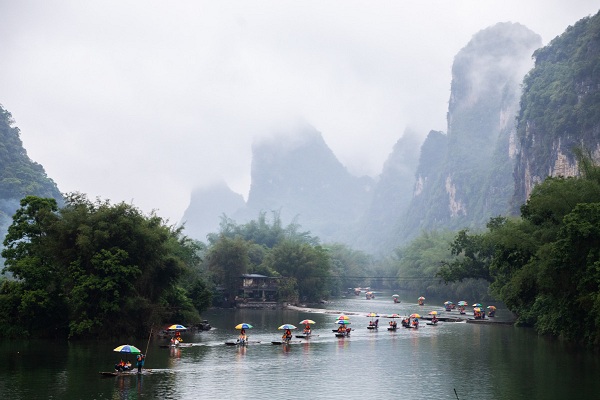Scenic river reaps green rewards

Tourists take a trip on the scenic Lijiang River on bamboo rafts in Guilin, Guangxi Zhuang autonomous region, on April 14. MAO YANZHENG/FOR CHINA DAILY
The former quarry under Yanshan district, not far from the banks of the Lijiang River scenic area, is among more than 20 similar quarries closed in recent years. Re-greening the hill, nestled amid Guilin's imposing karst formations, reflects the community's increasing resolve to cherish and conserve its iconic waterway as an integral part of its multilevel, multisector development model. This model ranges from tourism and textiles to building on the ecological, social and economic benefits from the area's improving environment.
Huang Feng, deputy director of the city's science and technology bureau, said the latest measures and projects, supported by the innovation and development of the eco-agricultural, cultural and healthcare industries, have achieved initial results that can be replicated beyond Guilin.
"The in-depth protection and utilization of the Lijiang River is in line with moving urban and rural industry away from the waterway to reduce any negative impact. With ecological protection and restoration, the Lijiang River basin ecology has been effectively repaired, managed and protected," Huang said.
Targeted ecological restoration projects for Guilin's karst natural heritage sites in scenic spots cover more than 100,000 square meters, with afforestation of more than 10,000 hectares and the Lijiang River basin's forest coverage growing by over 80 percent, he said.
With more than 120 billion yuan ($18.5 billion) invested, restoration of the karst heritage landscape aims to "continuously enrich and improve sustainable development, resource conservation, ecotourism, and agricultural and cultural innovation and capacity", Huang said.


